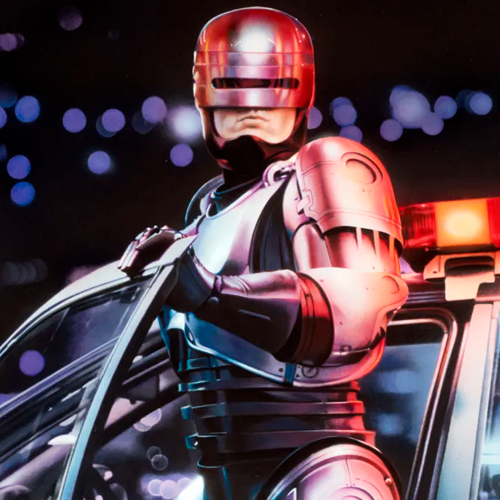

Since its debut in 1987, “RoboCop” has become an icon of pop culture, captivating audiences with its blend of action, suspense, and social commentary. Directed by Paul Verhoeven, this film transcended the boundaries of the science fiction genre, offering not only entertainment but also a reflection on ethical and moral issues.
Delving into the behind-the-scenes of this cinematic classic, we discover a series of fascinating curiosities that contributed to its creation and lasting legacy. From the challenges faced by the production team to the creative choices that brought the iconic characters to life, every aspect of “RoboCop” is permeated with intriguing stories and interesting details.
In this exploration, we will unravel the secrets behind Alex Murphy’s metallic armor, the cybernetic hero known as RoboCop, as well as the reasons behind the dystopian Detroit depicted in the film. Furthermore, we will examine the cultural impact and lasting influence that “RoboCop” had on the film industry and popular imagination.
Get ready for an exciting journey through the dark corridors of OCP and the dangerous streets of futuristic Detroit as we explore the curiosities and secrets behind the 1980s sci-fi cinema classic, “RoboCop.”
1 – ICONIC WEAPONS
The protagonist’s primary weapon is the Auto-9, a semi-automatic pistol that identifies him in virtually all of his appearances. His additional arsenal has always fluctuated over time, including flamethrowers, machine guns, shields, and grenade launchers, among other devices.
As for his armor, it is made of materials such as titanium and Kevlar, being another aspect that constantly evolves depending on the interpretation of those working with the character. However, it is widely recognized that, due to the severe destruction of his body, few are the parts of his anatomy that have remained intact.
An intriguing point about the character’s design is that his creator, screenwriter Edward Neumeier, found inspiration in Judge Dredd and Iron Man to conceive the appearance of RoboCop.
2 – DERIVATIVE SERIES
The inaugural film of the saga premiered in 1987, starring actor Peter Weller in the role of RoboCop. Following its resounding success, a sequel was released in 1990, followed by the third film in 1993, where Weller was replaced by Robert John Burke in the lead role.
In addition to the films, the character also starred in two animated series, one in 1988 and another in 1998, titled “RoboCop: Alpha Commando,” as well as two TV series, released in 1994 and 2001.
3 – COMICS
The impact of RoboCop was so significant that it was adapted into a series of comics by Marvel, with publication from 1990 to 1992. Since then, the character has found a home in various publishers, including Dark Horse, Avatar Press, and Dynamite, before finally landing at BOOM! Studios, which currently holds the publishing rights to the iconic character.
4 – TERMINATOR MEETS ROBOCOP
In 1992, under the talented scripts of Frank Miller and the skilled artwork of Walt Simonson, the cyborg starred in a four-issue series, facing off against the Terminator, another prominent icon of action and science fiction films, which enjoyed great popularity at that time.
In the plot, three Terminators are sent to annihilate RoboCop. After discovering that part of his own technology would contribute to creating the dark future where Skynet would eradicate humanity, Alex decides to travel alone to the future and confront the machines, unleashing a narrative filled with action and confrontations with killer robots – a true reflection of the style of the 90s.
5 – VIDEO GAME SERIES
RoboCop has had an extensive history in video games. Each of the films from the original character trilogy was accompanied by a corresponding game, but what truly stood out was his collaboration in a crossover with none other than the Terminator in “RoboCop Vs The Terminator,” released for the Super Nintendo.
Additionally, the character starred in a game released in 2001 for GameBoy, followed by another in 2003 for Xbox and PS2. There was also a title released for mobile devices, based on the 2014 film.
6 – A REBOOT WAS MADE, BUT IT WASN’T SUCCESSFUL
The most recent film was a reboot, released in 2014, directed by the Brazilian José Padilha, with Joel Kinnaman in the role of Alex Murphy, and featuring Gary Oldman, Michael Keaton, and Samuel L. Jackson in the cast.
This film reimagines the origin of RoboCop while staying true to the essence of the original storyline. Despite Padilha’s dedication and the talented cast, the film didn’t achieve great success and ended up having its sequel canceled by Sony.
7 – THE HEAVY ARMOR
RoboCop’s suit was so hot and heavy that Peter Weller was losing about 1 kilogram per day due to dehydration. Eventually, an air conditioning system was installed in the suit to provide some relief. Surprisingly, the armor was only completed on the first day of filming, leaving Weller with no time to practice the movements.
Despite the famous iconic poster, Weller couldn’t fit into the car wearing the full armor. For this reason, in all the scenes inside the vehicle, RoboCop was “incomplete,” without the lower part of the armor.
8 – DANCING IN CENTRAL PARK
Peter Weller sought guidance to refine the movements of the police robot. Using mime techniques, he dedicated himself to training for seven months until he created a distinctive movement style for the character. Weller even practiced dance in Central Park while wearing American football gear as part of this development process.
9 – BELIEVE IT OR NOT: ROBOCOP WASN’T FILMED IN DETROIT!
Despite the plot unfolding in a futuristic Detroit, not a single scene (or its sequences) was filmed in the actual city. According to producer Jon Davison, they chose not to shoot in Detroit due to the absence of futuristic or contemporary buildings. Instead, filming took place in the cities of Pittsburgh and Dallas.
10 – DIRECTOR MAKES A CAMEO IN THE FILM
Alfred Hitchcock always took pleasure in making special appearances in his films. Conversely, Paul Verhoeven, on the contrary, only had one accidental cameo in front of the camera, and it was in “RoboCop.” The scene in question occurs when RoboCop apprehends one of the thugs in a nightclub. The camera operator, Jost Vacano, captured Verhoeven inspiring the dancers, resulting in an “easter egg” for the Blu-ray. Verhoeven only discovered the existence of the scene during the film’s editing but agreed that it fit perfectly into the scene.
In conclusion, exploring the behind-the-scenes curiosities of the 1987 film “RoboCop” allows us to glimpse not only the creativity and innovation of the filmmakers involved but also the complexity and care dedicated to producing a science fiction and action cinema classic. From the challenges faced by the actors within the heavy armor to the creative decisions behind the character design and filming locations, every detail reveals the collective effort and passion that brought this cinematic masterpiece to life. Furthermore, by examining the lasting legacy of “RoboCop,” we can appreciate how its ideas and themes continue to resonate in popular culture decades after its release, solidifying its place as an unforgettable milestone in the history of cinema.








